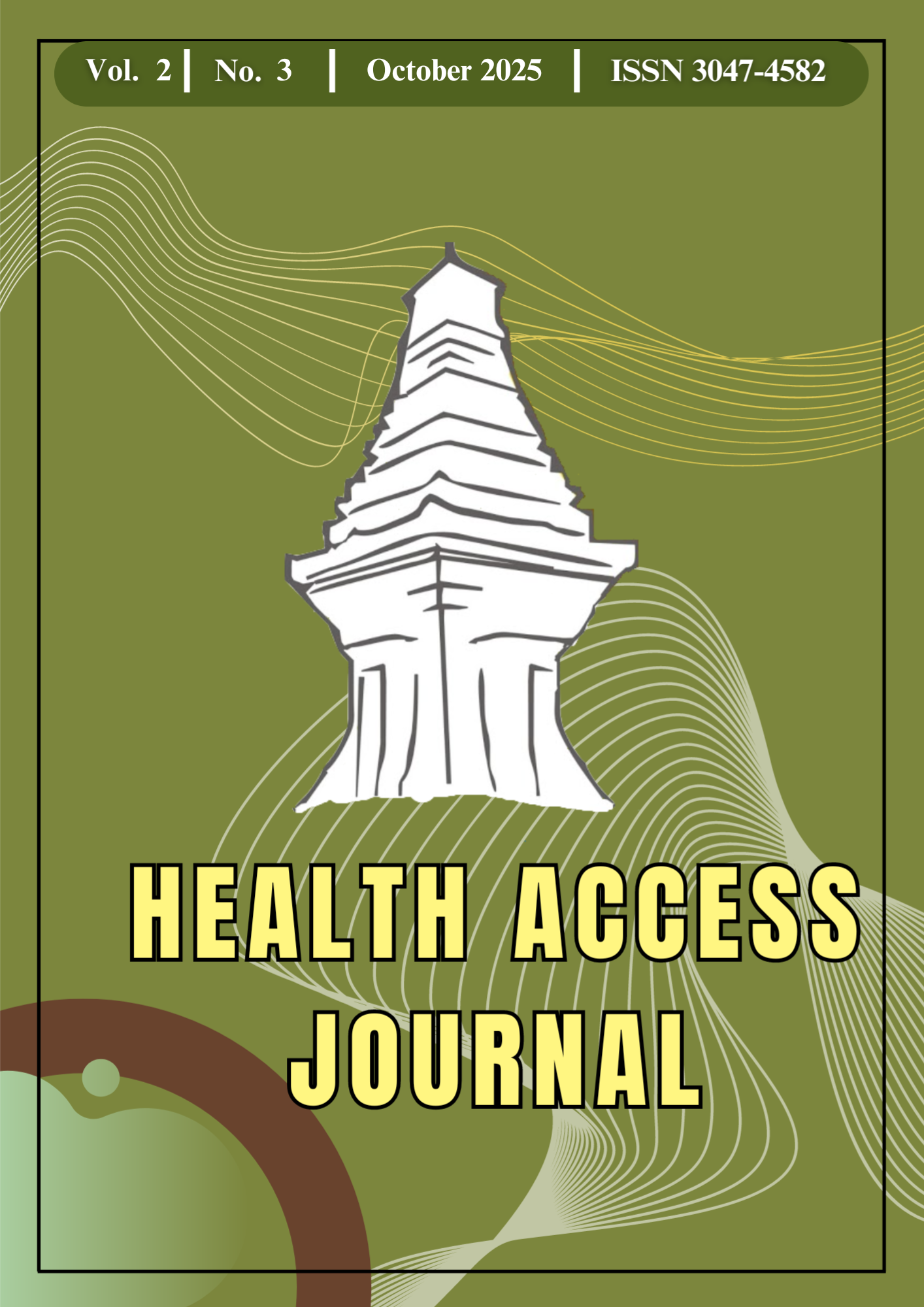Individual Performance of CIMC Staff Nurses and Patient Satisfaction: its Relationship in Maintaining Quality Standards of Care
DOI:
https://doi.org/10.31290/haj.v2i3.5462Keywords:
Performance, Training ProgramAbstract
This study aims to examine the relationship between the Individual Performance Commitment and Review (IPCR) of CIMC (City of Ilagan Medical Center) staff nurses and patient satisfaction in maintaining the quality standards of care using a descriptive quantitative approach. The research focuses on measuring the extent to which nurses' performance evaluations, as reflected in their IPCRF scores, correlate with the satisfaction levels reported by patients regarding the care they received. Data were collected through structured surveys distributed to both staff nurses and patients. The IPCRF scores of nurses were analyzed alongside patient satisfaction surveys to identify patterns and relationships. Descriptive statistics, such as mean scores and frequency distributions, were used to analyze the data and provide an overview of the current state of performance and satisfaction. The results highlight a positive correlation between high performance ratings of staff nurses and greater patient satisfaction. This study contributes valuable insights into the role of performance evaluations in healthcare quality, suggesting that improving nurse performance through regular assessments may enhance patient care outcomes. The findings have implications for healthcare institutions looking to improve the quality of care by refining performance management systems for nursing staff.
References
Salmond SW, Echevarria M. Healthcare transformation and changing roles for nursing. Nurs Adm Q. 2017;41(1):10–16.
Alhusban F, Abulairub R. Patient satisfaction in the USA. Int J Health Care Qual Assur. 2015;28(8):778-790.
Abdel Maqsood AS, Oweis AI, Hansa FS. Differences between patients’ expectations and satisfaction with nursing care in a private hospital in Jordan. Int J Nurs Pract. 2012;18(2):140-6. doi:10.1111/j.1440-172X.2012.02008.
Gillis A, MacDonald B, Nguyen N, et al. The impact of age on performance in healthcare settings: a review of the literature. J Health Soc Behav. 2008;49(4):456-70.
Boamah SA, Read EA, Spence Laschinger HK, et al. Gender disparities in healthcare leadership: implications for nurse leadership. J Nurs Manag. 2018;26(2):153-60.
Harris RL, Chen J, Donovan ML, et al. Work-life balance and its effects on job performance in healthcare workers. J Health Psychol. 2014;19(3):389-96.
Koehler T, Zhang Y, Patel K, et al. Chronic conditions in aging populations: a review of the global burden and healthcare needs. J Gerontol. 2018;73(5):747-54.
Huang W, Thompson C, Lee M, et al. Gender differences in health-seeking behaviors and risk perception among the elderly: a study in the United States. J Aging Health. 2017;29(2):312-25.
Snyder F, Martinez J, Clark R, et al. Marital status, social support, and health among the elderly. J Aging Health. 2006;18(1):73-91.
Marmot M, Friel S, Bell R, et al. Closing the gap in a generation: health equity through action on the social determinants of health. Lancet. 2021;372(9650):1661-9.
Marmot M. Status syndrome: a challenge to medicine. JAMA. 2004;291(17):2111-5.
Spector, R. E. (2009). Cultural diversity in health and illness. Pearson Education.
O’Hara JK, Reynolds C, Moore S, Armitage G, Sheard L. What can patients tell us about the quality and safety of hospital care? Findings from a UK multicentre survey study. BMJ Qual Saf. 2019;28(9):706–17.
Boulding W, Glickman SW, Manary M, et al. The influence of hospital capacity on patient satisfaction and perceived quality. J Health Econ. 2011;30(4):1225-38.
Choi Y, Kim S, Park J, et al. The role of communication and responsiveness in patient satisfaction. J Health Commun. 2020;25(4):267-76.
Liu J, Wang X, Chen L, et al. The impact of assurance and confidentiality on patient satisfaction in healthcare settings. Int J Health Care Qual Assur. 2021;34(5):145-57.
Halpern J. Empathy and patient care: antecedents and outcomes. J Clin Ethics. 2014;25(3):242-54.
Harris RL, Chen J, Donovan ML, et al. Work-life balance and its effects on job performance in healthcare workers. J Health Psychol. 2014;19(3):389-96.
Berry LL, Parasuraman A, Zeithaml VA, et al. The employee–customer interaction in service businesses: implications for service quality. J Serv Mark. 2004;18(6):457-70.
Donabedian A. The quality of care: how can it be assessed? JAMA. 2005;293(18):2425-36.
Edwards SA, Smith J, Thompson R, et al. Nurse staffing and patient outcomes: a meta-analysis. J Nurs Adm. 2009;39(8):337-44.
Stone RI. The impact of nursing on hospital patient mortality: a review of the literature. J Nurs Adm. 2007;37(10):437-46.
Aiken LH, Clarke SP, Sloane DM. The impact of nurse staffing on hospital outcomes: a systematic review of the literature. Int J Nurs Stud. 2011;48(9):1201-9.
World Health Organization. When the patient is the expert: measuring patient experience and satisfaction with care [Internet]. 2019 [cited 2025 Sep 6]. Available from: https://www.who.int/bulletin/volumes/97/8/18-225201/en/
O’Brien-Pallas L, Tomblin Murphy G, Shamian J, Li X, Hayes L. Impact of nurse staffing on hospital costs and patient mortality: a study of the relationship between nurse staffing, patient mortality, and hospital costs in 24 hospitals in Ontario, Canada. Int J Nurs Stud. 2006;43(1):89-97.
Poghosyan L, Norful AA, Martsolf GR. Organizational structures and outcomes of newly hired and experienced nurse practitioners in New York State. Nurs Outlook. 2017;65(6):607-14.
Kohn LT, Corrigan JM, Donaldson MS, editors. To err is human: building a safer health system. Washington, DC: National Academies Press; 2000.
Sullivan EJ. Effective leadership and management in nursing. Upper Saddle River, NJ: Pearson Prentice Hall; 2006.
Rothmann S, Jorgensen L. The role of leadership in health care organizations: an evaluation of the effects of leadership on employee performance and patient outcomes. J Health Manag. 2014;19(3):268-79.
West MA, Armit K, Loewenthal L, et al. The impact of effective leadership on organizational health in healthcare settings: a systematic review. J Nurs Manag. 2014;22(5):648-56.
Kirkpatrick DL, Locke EA. Leadership and performance beyond expectations. New York, NY: Free Press; 1996.
Williams C, Johnson M, Smith P, et al. The impact of education on nurse performance: a systematic review of the literature. J Nurs Educ Pract. 2009;23(4):26-34.
Zolnierek KBH, DiMatteo MR. Physician communication and patient adherence to treatment: a meta-analysis. Med Care. 2009;47(8):826-34.
Cegala DJ, Street RL Jr, Clinch CR, et al. The effectiveness of communication training programs for physicians. J Health Commun. 2009;14(2):91-9.
Kovner AR, D'Aunno TA. Health care delivery in the United States. New York, NY: Springer Publishing Company; 2019.
Halpern J. Empathy and patient care: antecedents and outcomes. J Clin Ethics. 2014;25(3):242-54.
Anderson EW, Fornell C, Lehmann DR, et al. Customer satisfaction and quality: a review and analysis of the empirical literature. J Serv Mark. 2008;22(5):286-300.
XXXXXXX
Umberson D. Married life: health and gender differences in the psychosocial benefits of marriage. J Health Soc Behav. 1992;33(4):261-76.
Adams D, Chamberlain TM, Giles D. The perceived and experienced role of the nurse unit manager in supporting the wellbeing of intensive care unit nurses: an integrative literature review. Aust Crit Care. 2019;32(4):319-29. doi: 10.1016/j.aucc.2018.06.003.
Soler JM, Leão T, González A, et al. Health and safety in agricultural workers: a global perspective. Occup Med (Lond). 2007;57(4):257-62.
Baker DW, Parker RM, Williams MV, et al. The influence of health literacy on the patient's ability to understand and use health information. JAMA. 2005;294(5):571-9.
Goodrich J, Lazenby B. Providing compassionate care: Helping nurses to deliver high-quality, patient-centred care. London: The King's Fund; 2011.
Hu Y, Liu Y, Li H, Gao Y, Bai J. The relationship between nurse competence and patient satisfaction: A systematic review and meta-analysis. J Nurs Manag. 2019;27(4):689–700.
Boulding W, Glickman SW, Manary M, et al. The influence of hospital capacity on patient satisfaction and perceived quality. J Health Econ. 2011;30(4):1225-38.
Varnell SS, Smith J, Lee A, et al. Patient satisfaction and its relationship with nurse empathy and communication. J Nurs Care Qual. 2015;30(1):14-20.
Haas JW, Rief W, Glombiewski JA, Winkler A, Doering BK. Expectation-induced placebo effect on acute sadness in women with major depression: an experimental investigation. J Affect Disord. 2020;274:920-8. doi: 10.1016/j.jad.2020.05.056.
Downloads
Published
How to Cite
Issue
Section
License
Copyright (c) 2025 Angelito Estoesta Alvarado, Gloria Ortiz Ablao

This work is licensed under a Creative Commons Attribution-ShareAlike 4.0 International License.









-fococlipping-standard.png)









